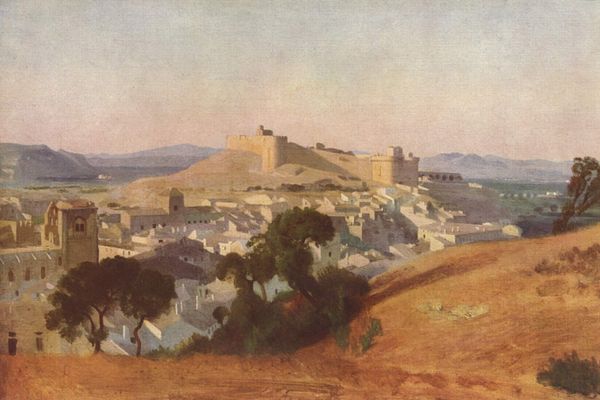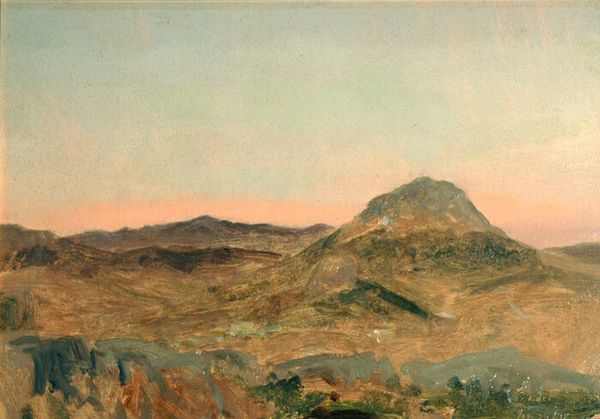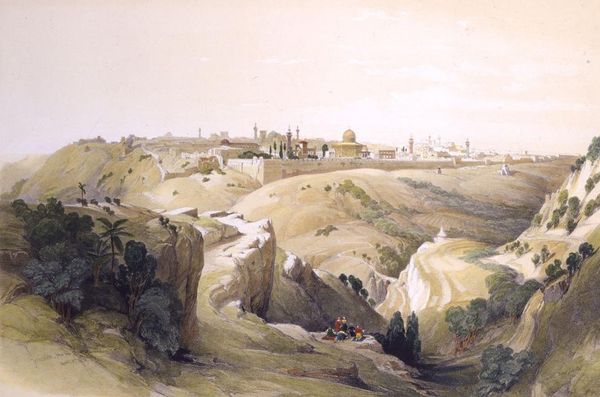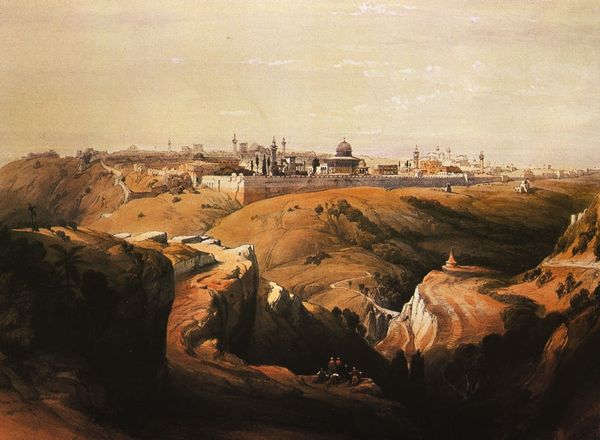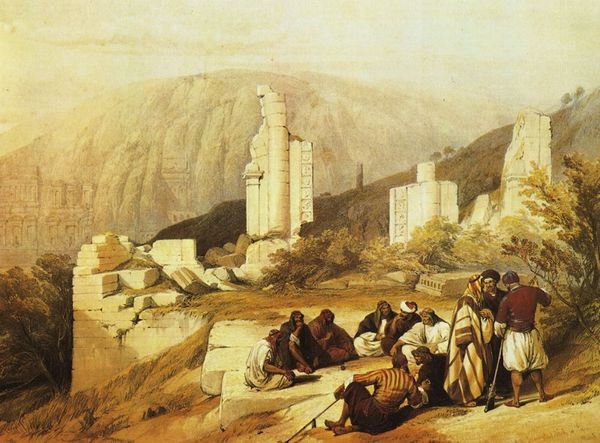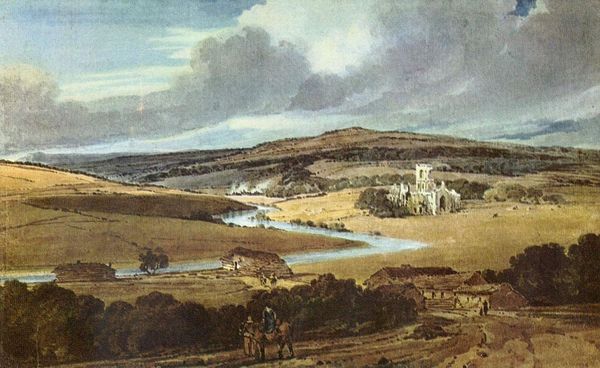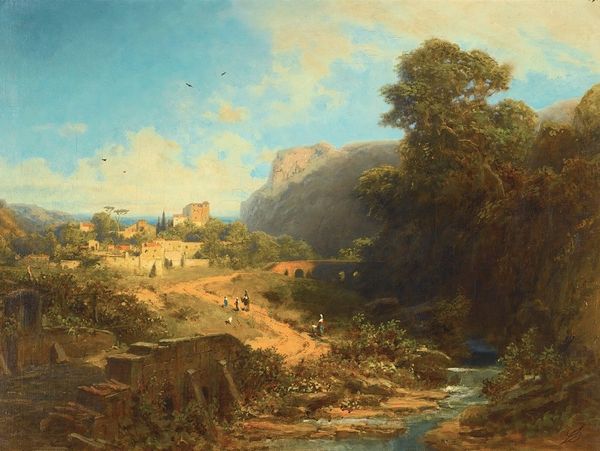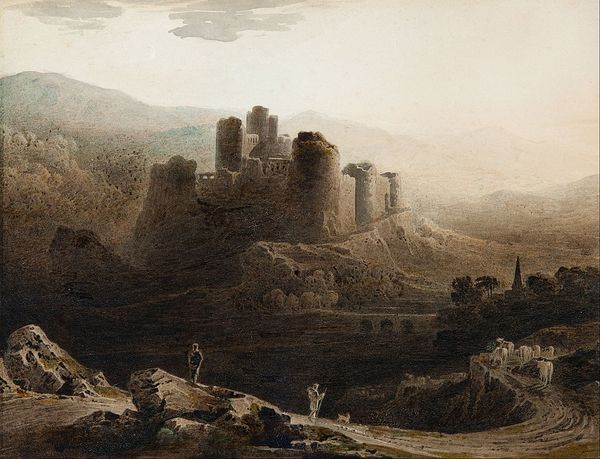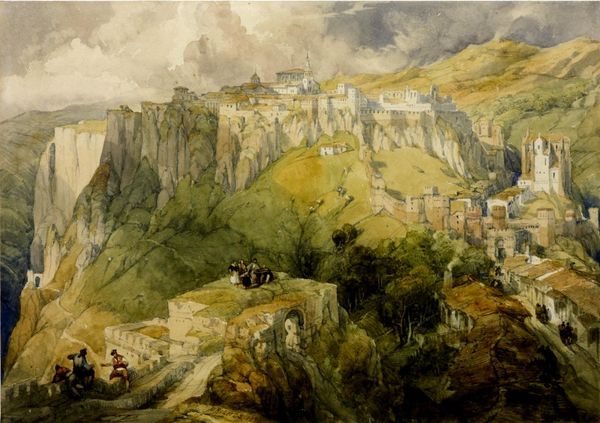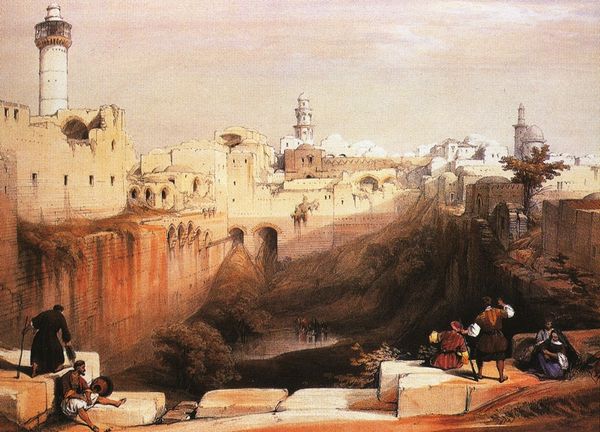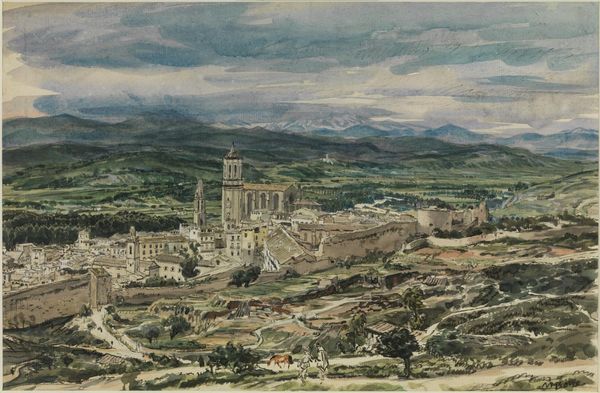
plein-air, watercolor
#
plein-air
#
landscape
#
oil painting
#
watercolor
#
romanticism
#
orientalism
#
cityscape
#
genre-painting
#
watercolor
Copyright: Public domain
Curator: David Roberts, a Scottish artist known for his Orientalist scenes, likely painted this watercolor, "View of Nazareth," during his travels in the Near East. What's your immediate reaction to it? Editor: My eye is drawn to the stark, almost sun-bleached landscape. The warmth of the ochre hues contrasted with the geometric shapes of the buildings creates an interesting tension. Curator: Roberts made several expeditions to the Middle East, and works such as this gained significant popularity illustrating biblical lands to a European audience hungry for exotic yet familiar imagery. Editor: So it was made for the gaze of an external viewer? You can feel the orientalism—this romantic idea of a distant, perhaps simpler, life. What can you tell me about the materiality of this piece? Watercolor gives it a lighter, airy quality compared to a denser oil painting. Curator: Yes, precisely. Watercolor allowed Roberts to work *en plein air,* capturing the landscape directly, making it easily reproducible in prints. Think about the social function of these widely circulated images. They solidified Western notions of the East. The details of local dress in the foreground, the livestock, it's a snapshot intended to educate and exoticize. Editor: It does feel a bit like visual documentation, presenting this landscape as both historical site and contemporary scene. Is there any indication about the labor practices around making and distributing Roberts' watercolors? Were local artisans or printmakers involved? Curator: Good question! Roberts employed assistants in London to produce lithographs from his sketches. This involved a network of skilled laborers in the printing industry. Furthermore, you have to acknowledge that his access and travel were financed and facilitated by a certain social class invested in colonial power. Editor: It really shows how an image—and the access to making an image like this—can become entangled with so many complex power structures and economies. Curator: Absolutely. What appears as a simple landscape contains layers of social and material history that inform how we understand it today. Editor: It’s fascinating to see how seemingly innocuous scenes reveal deeper dynamics of travel, representation, and artistic production. Curator: Indeed. Art invites us to explore these relationships, providing historical, social, and material insights.
Comments
No comments
Be the first to comment and join the conversation on the ultimate creative platform.
